

Pymmes Brook is a less known river in London but a very attractive one. It is sourced near High Barnet and flows south east to merge with the Lea near Tottenham Hale. A waymarked trail follows the route and is around 13 miles in length so can be easily split into two halves at Arnos Grove. I followed the guidance in the excellent The Pymmes Brook Trail by Colin Saunders who has also written the guidebooks on the Capital Ring and London Loop which I used.
The day started fine and sunny with a forecast in the high 20s for later in the day. Maybe because of this, and also that it was Ascot week the trains were very busy. The concourse of Waterloo was a sea of colour with hats and dresses for the occasion, my walk hopefully would be somewhat quieter. There are alternate starting points but I choose to start at High Barnet tube station so at Waterloo I caught the Northern line on the lengthy trip to its terminus there, arriving just before 11am.
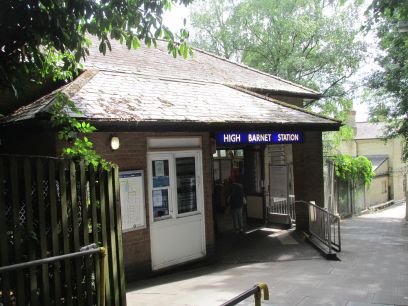
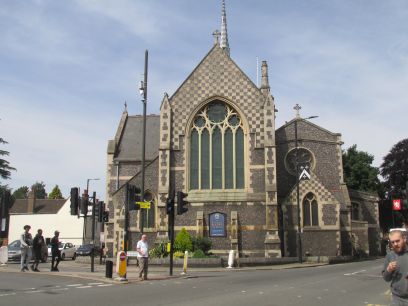
The Pymmes Brook trail shares some of the first part of the route with London Loop section 16 which I had walked earlier but first it goes though the town centre of High Barnet and past the magnificent church of St John the Baptist. Quite a pleasant town centre and the Spires shopping centre with twin spires outside was also passed.
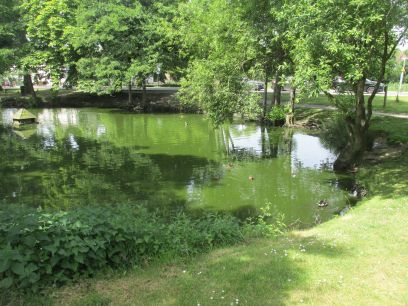
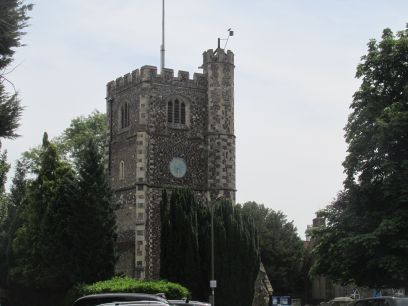
Out of High Barnet and the lovely village of Monken Hadley is reached, now on the London Loop route. The ponds around here are the source of the Pymmes, or rather its first tributories. Near here was the Battle of Barnet in the Wars of the Roses. Many lovely houses and an idyllic spot. The parish church of St Mary the Virgin dominates with a cresset beacon visible on its tower.
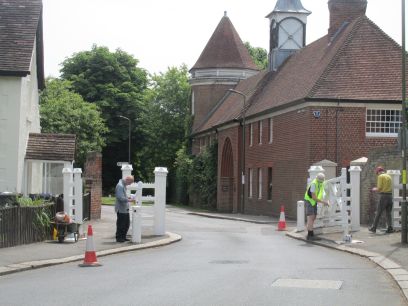
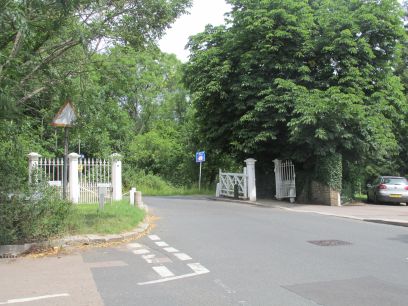
Outside the village Hadley Common is reached. Historically this was used for cattle grazing and five white gates were installed on the roads to pevent the cattle from straying. The gates remain. Volunteer workmen were busy repainting the first gate, I joked with them that they were making the white gate even whiter! Further along Hadley Common Road Monkenhurst, the magnificant mansion where Spike Milligan lived for a while, was passed. The junction at the third white gate was fairly busy and with a tight bend some care was needed crossing.
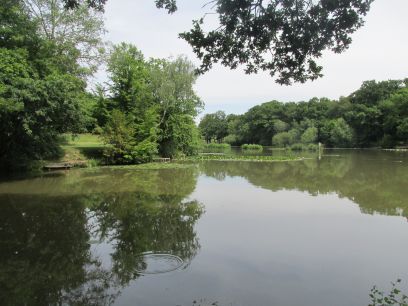
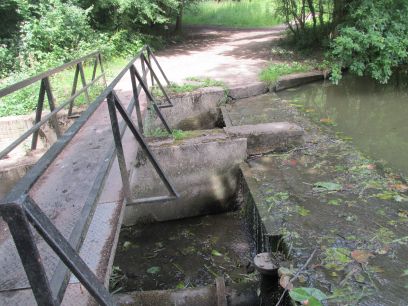
After following the London Loop for a while through pleasant woodland and crossing the East Coast main line the lovely Jack's Lake is reached. This is not visible from the path but a short diversion up a steep flight of steps shows it in its glory. I walked along one side for a while, very pleasant and deserted apart from a few fishermen. Pymmes Brook proper runs from here over a small dam although this seemed much reduced from the massive waterfall shown in the guide book photograph.
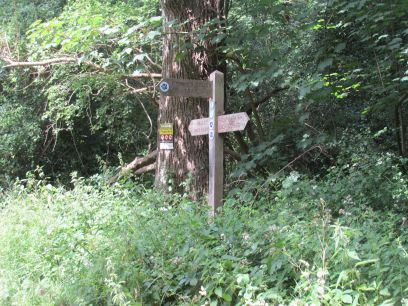
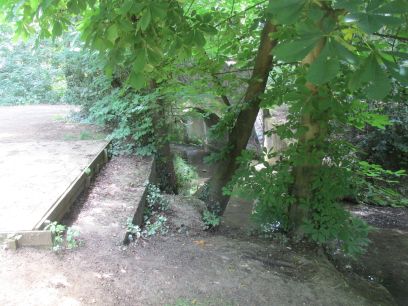
Back down from the lake and here I parted with the London Loop following the signpost to the south. Pymmes Brook is seen flowing under the bridge I had just crossed in pleasant woodland.
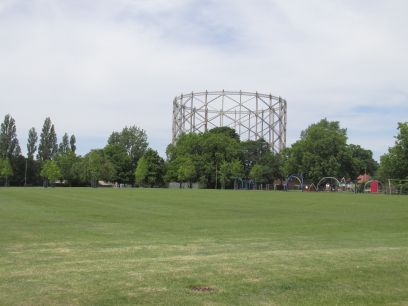
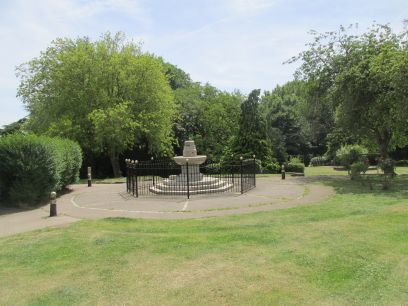
The trail runs on an earth path past the entrance of two schools then goes into Victoria Recreation Ground with the Pymmes a little way to the east. There is a new large leisure centre here. The dominating gas holder is a listed building it seems so is staying. At the bottom is a restored and fenced water fountain from the 19th century. Nearby Shire Bourne, a tributary of the Pymmes, can be seen.
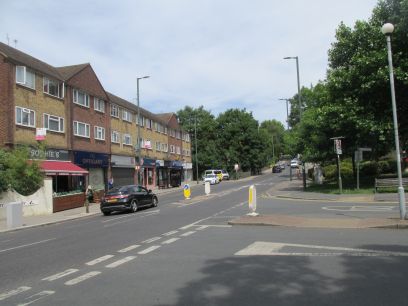
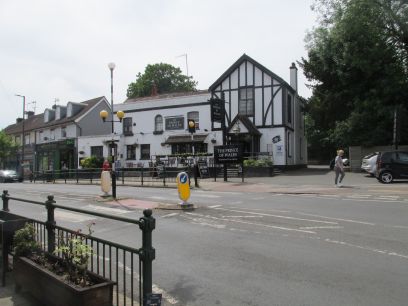
The route now follows Crescent Road for a while with the brook still out of sight but visible in a couple of places. East Barnet Village is a pleasant place with a mixture of old and new. As time was moving on I decided to stop and lunch at the Prince of Wales there. Suitably refreshed I made my way on what turned out to be the best part of the day's walk.
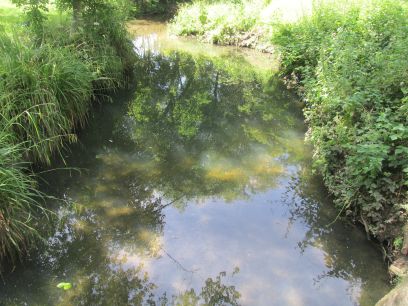
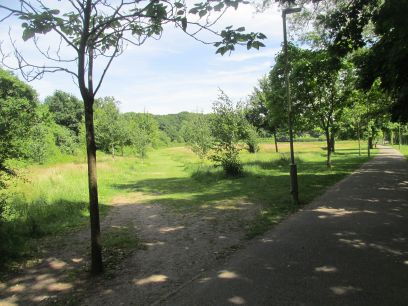
Starting at the side of East Barnet Methodist Church the trail initially follows the appropriately named Brookside and continues through Oak Hill Park whose oak trees are suggested were used in the construction of St Albans Abbey. On the hill is the 18th century mansion of Oak Hill College and St Mary the Virgin church but both were hidden by the trees.
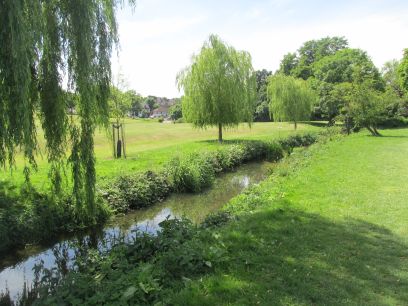
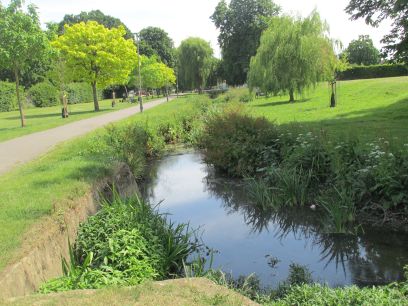
After Parkside the trail follows East Walk. It and West Walk on the other side and their broad grassy strips were planned to minimise the risk of flooding to adjacent properties. Whatever, the little brook rippling its way along here is almost magical. Quite a few magnificent weeping willow trees which feature in the trail logo on the recently replaced finger posts.
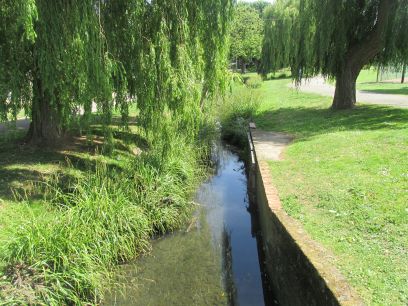
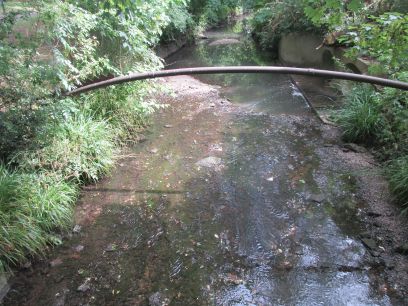
At Osidge Lane where there was once a ford Brunswick Park is followed along Waterfall Walk. The brook is shrouded with heavy vegetation along here, at one point I did find a path right along the bank but that soon petered out at a big fallen tree. There is supposed to be a waterfall at one point but I failed to find it.
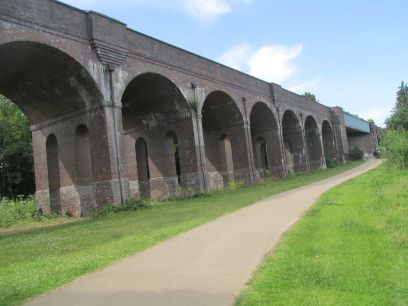
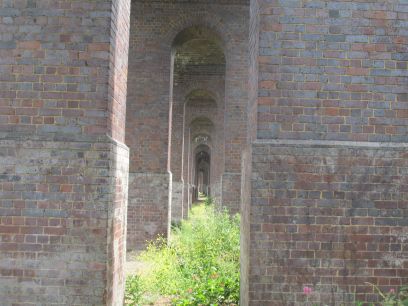
At the end of Waterfall Walk is the magnificent Arnos Park Viaduct which was built in 1933 when the Picadilly Line was extended to Cockfosters. 318m long with 42 brick double arches and stand under them to get a bit of an optical illusion with the multiple arches.
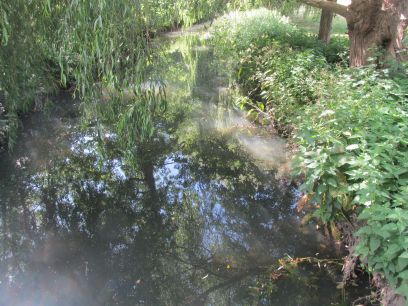
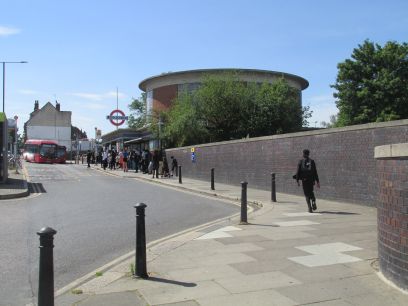
A final view of the brook before turning off for the short walk to Arnos Grove tube station, a grade II building designed by Charles Holden, at school leaving time. Then another longish ride back to Waterloo and the train home.